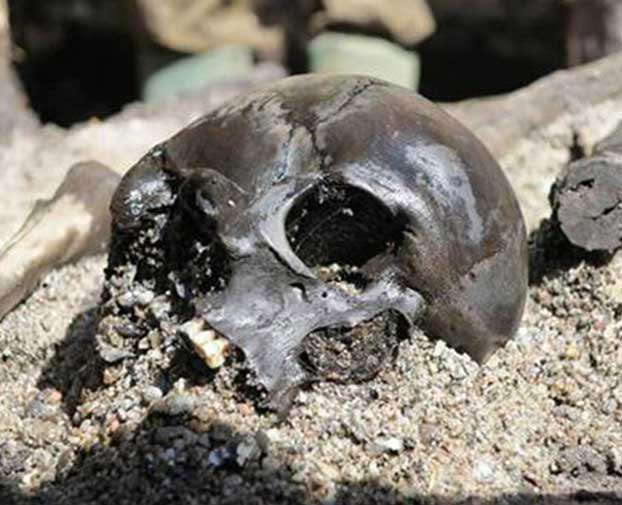We have read of many ancient rituals that concerned sacrificing human lives. Some had truth and historical backgrounds, while some were mere legends. But what could have been the reason to sacrifice an entire army during the Iron Age?
Archeologists discovered hundreds of human bones in the Alken Enge bog in eastern Denmark. Upon investigation, they found out that the remains belonged to ancient soldiers that died some 2,000 years ago.
The Skeleton Army Rises
The Alken Enge bog has been an interest for archeologists since the 1950s, with the discovery of human bones, including 50 skulls were discovered in the pit. As of 2010, the bog has yet provided archeologists with significant findings. A team from Denmark’s Aarhus University found skeletal remains of a 200-man army. (Source: The Mary Sue)
The team found the remains of nearly 250 people, along with several weapons like spearheads, shields, clubs, and a single ax. Archeologist Mads Holst hypothesizes that their discovery is evidence of some sort of military catastrophe some 2,000 years ago. They feel that their discovery is just a small sample of an ancient mass grave. They are expecting to discover thousands of remains. (Source: Archaeology Org)
Holst mentions in an interview that the cuts and slashes on the skeletons showed that these people suffered a violent death. Furthermore, he reports that the find was extraordinary since the remains were unusually well-preserved, thanks to the conditions created by the bog.
Ejvind Hertz, the curator of archeology at Skanderborg Museum, claims that the remains were well-preserved experts may analyze their DNA. Upon further investigation, they have determined that the remains belonged to an Iron Age army and that all of it can be traced to a single event. (Source: Reuters)
Were the Warriors Sacrificed?
Holst and his team believe that their discovery resulted from an ancient ritual. They thought that the army was sacrificed to some gods, strikingly similar to Teutons’ war practices. As described by Roman literature, the ancient Teuton tribe had atrocious war beliefs and rituals. (Source: Science Nordic)
Holst provided evidence to support this when he and his team discovered traces of cutting and scraping on the bones. This suggests that the warriors were desecrated before being disposed of in the bog. Another piece of evidence Holst found was a wooden stick with four male pelvic bones threaded onto it, similar to Roman writer Tacitus described in his literature. (Source: Archaeology)
The team believes that this could be evidence of Tacitus’ account of the aftermath of the Romans’ famous defeat in the Battle of Teutoburg Forest in 9 AD. In his Annals, Tacitus described that bones are laid spread out or heaped in the middle of the plain, depending on whether the warrior fled or resisted.
Tacitus also described that human heads were nailed to trees nearby and that the Teutons constructed altars in nearby groves. These altars served as sacrificial spots where higher-ranking army officials were sacrificed. It was also known that when Teutons won a battle, they killed off all surviving enemies. (Source: Science Nordic)
